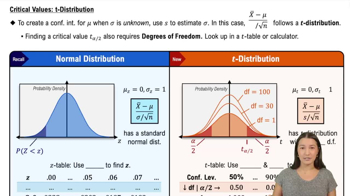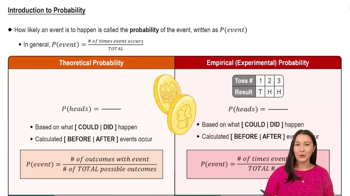Here are the essential concepts you must grasp in order to answer the question correctly.
Balanced Design
A balanced design in statistics refers to an experimental setup where each treatment or condition has an equal number of observations or replicates. This ensures that the results are not biased by unequal sample sizes, allowing for more reliable comparisons between groups. In a balanced design, the variability within each group is minimized, enhancing the statistical power of the analysis.
Recommended video:
Critical Values: t-Distribution
Experimental Design
Experimental design is the framework for planning how to conduct an experiment. It involves selecting the treatments, determining the sample size, and deciding how to randomize subjects to different conditions. A well-structured experimental design is crucial for obtaining valid and interpretable results, as it helps control for confounding variables and ensures that the effects of the treatments can be accurately assessed.
Recommended video:
Introduction to Probability
Statistical Power
Statistical power is the probability that a statistical test will correctly reject a false null hypothesis, essentially detecting an effect when there is one. Higher power is achieved through larger sample sizes and balanced designs, which reduce variability and increase the likelihood of observing significant results. Understanding power is essential for designing experiments that can reliably detect meaningful differences between groups.
Recommended video:
Parameters vs. Statistics






